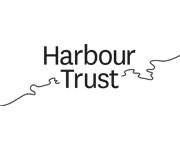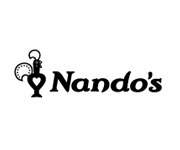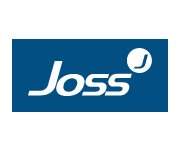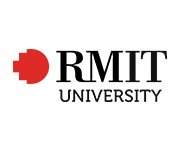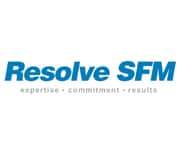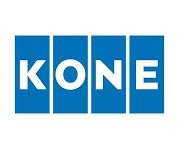A Guide to Facilities Risk Management: How to Evaluate and Manage Common Risks
Effective facilities risk management is essential for ensuring any organisation's safety, efficiency, and operational continuity. Whether you're managing a corporate building, industrial plant, or educational institution, understanding and mitigating risks is vital for minimising disruptions and safeguarding people and assets. This guide'll walk you through the essential steps of evaluating and managing common facilities management risks, focusing on how Pinnacle software can help streamline and optimise these processes.
What is Facilities Risk Management?
Facilities risk management involves identifying, assessing, and mitigating risks impacting operations, safety, and assets. These risks can range from physical hazards, such as fire and equipment breakdown, to compliance risks, such as non-compliance with building codes or environmental regulations. The goal is to develop a comprehensive strategy to minimise these risks, prevent costly disruptions, and ensure a safe working environment for employees, visitors, and tenants.
Common Risks in Facilities Management
Facilities managers face a wide range of risks that require proactive management. Here are some of the most common risks you may encounter:
- Health and Safety Risks
Health and safety are at the forefront of any facility risk management plan. Common health and safety risks include slips, trips, and falls, fire hazards, electrical malfunctions, and unsafe working conditions. Facilities managers must ensure that all areas of the building comply with safety regulations and that staff are trained to handle emergencies.
- Fire and Emergency Hazards
Fire is one of the most devastating risks for any facility. Facilities managers must maintain fire detection systems, evacuation routes, and fire safety equipment. Regular fire drills and training should ensure that all personnel know what to do in an emergency.
- Environmental Risks
Environmental factors such as flooding, severe weather, and air quality can pose significant facility risks. Facilities managers need to assess their building's vulnerability to these risks and implement contingency plans. For example, properties in flood-prone areas should have flood mitigation measures and emergency evacuation plans.
- Security Risks
Unauthorised access, theft, and vandalism are major concerns for facilities management teams. Security risks are typically managed through access control systems, surveillance cameras, and regular monitoring of building entry points.
- Equipment and Asset Failure
Regular maintenance and inspections ensure critical equipment, such as HVAC systems, elevators, and electrical components, remain operational. Equipment failure can lead to costly downtime and pose safety risks.
- Regulatory and Compliance Risks
Staying compliant with regulations is a crucial aspect of facilities management. This includes ensuring the building meets local building codes, fire safety regulations, and health and safety requirements. Failing to comply can result in legal penalties, fines, and reputational damage.
- Operational Risks
Operational risks arise from inefficiencies in how the facility is managed. This includes poor space utilisation, inadequate resource allocation, and suboptimal workflow management. Operational risks can often be addressed through technology and automation.
Steps to Evaluate and Manage Facilities Risks
- Identify Potential Risks
The first step in managing risks is identifying them. This requires conducting a thorough risk assessment of your facility. Walk through the building and inspect all areas for potential hazards. Consult with employees, contractors, and other stakeholders to understand the most critical risks.
- Evaluate the Likelihood and Impact
Once risks have been identified, evaluate their likelihood and potential impact on the facility. This helps prioritise the risks that require immediate attention. For example, a fire hazard may be more immediate than a minor equipment malfunction, but both require action.
- Develop Mitigation Strategies
Mitigation strategies should be developed for each identified risk. These strategies should include preventive measures to reduce the likelihood of the risk occurring and contingency plans if the risk materialises. For example, regular preventive maintenance and backup equipment could minimise disruptions if equipment failure is a risk.
- Implement and Monitor Risk Management Plans
Put your risk management strategies into action. This may involve updating safety protocols, improving maintenance schedules, or installing new technologies for security. Regular monitoring of risks is essential to ensure that risk management strategies are effective. Use data and feedback to improve your approach continuously.
- Use Technology to Streamline Risk Management
In today's digital age, facilities management software can significantly enhance how risks are managed. Pinnacle software offers powerful tools that help facilities managers identify, assess, and mitigate real-time risks.
How Pinnacle Software Can Help in Facilities Risk Management
Pinnacle software offers features designed to make facility risk management more efficient and effective. Here's how it can help:
- Risk Assessment Tools
Pinnacle software provides robust risk assessment modules that enable facilities managers to identify, categorise, and evaluate risks across various facility areas. By inputting data on potential hazards, the software helps prioritise risks based on their likelihood and impact, ensuring that the most critical issues are addressed first.
- Real-Time Monitoring and Alerts
With Pinnacle's real-time monitoring capabilities, facilities managers can stay informed about critical risks such as security breaches, equipment failures, or fire hazards. The software automatically generates alerts based on predefined risk thresholds, allowing managers to take prompt action.
- Maintenance Management
Pinnacle offers advanced maintenance management features that help facilities managers stay on top of routine inspections, repairs, and preventative maintenance. By automating maintenance schedules, Pinnacle ensures that equipment is always in optimal condition, reducing the risk of failure and downtime.
- Compliance Tracking
Pinnacle software includes compliance tracking tools that help facilities managers stay updated with industry regulations and safety standards. The software can generate compliance reports and alerts for upcoming deadlines, ensuring your facility complies with all relevant laws and regulations.
- Data-Driven Insights
Using the data collected from various sources, Pinnacle provides in-depth analytics and reports that offer valuable insights into the effectiveness of your risk management strategies. This helps you make informed decisions and adjust your risk management plan.
Conclusion
Facilities risk management is essential for maintaining any facility's safety, efficiency, and longevity. You can significantly reduce the chances of costly disruptions by identifying potential risks, evaluating their impact, and implementing effective mitigation strategies. Leveraging technology like Pinnacle software enhances your ability to manage real-time risks and comply with industry regulations. Investing in robust risk management practices and utilising powerful tools can safeguard your facility and ensure its continued success.
Explore Pinnacle's risk management solutions today to take your facility management to the next level and stay ahead of potential risks.






